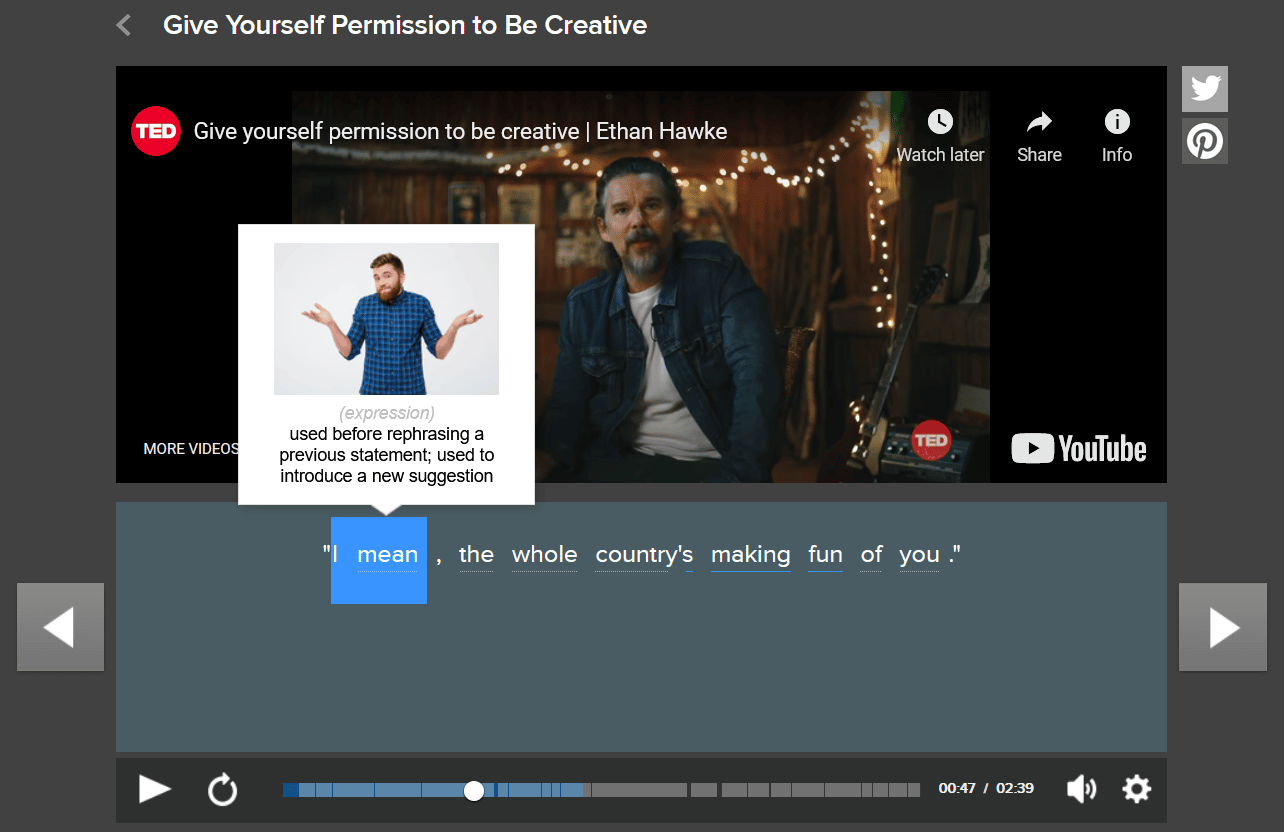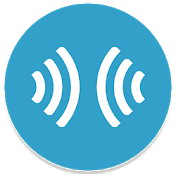Today’s guest post is by Avery White. Avery writes short stories and spoken word, and is currently working on his first novel for middle grade readers. He runs thirdpersoncreative.com, a site dedicated to weaponizing stories against injustice, prejudice, and passivity in the world around us.
“Respect the poet!” the crowd shouts at a couple at the bar oblivious to what’s going on.
Silence.
Slowly, alliterative spoken word sends chills across my neck, down my arm, and into my chest.
I’m feeling words as my eyes stare rapt at the stage.
Literary devices fly with syllables punctuated by inflection. Poetry one line, prose the next. The performer pauses. It’s 2008, and I’m hooked.
I was first introduced to spoken word while taking a creative writing class in college. I then got involved with a local spoken word community in Bryan, Texas called Mic Check, where the scene above happens weekly.
And today, I’m showing you how to craft your own powerful spoken word piece.
How to Speak Spit Spoken Word
What!?
You mean you weren’t born with an innate ability to write poetry, combine it with performing arts techniques, and rhythmically deliver a piece with clever intonation?
Performance poets weren’t either. Even if their names are Sarah Kay or Madi Mae.
Do you have feelings?
Do you wish you could let them go out, terrorize the neighborhood for a bit, and then come home to you without doing any damage (the kind that costs you money)?
Got a pen?
Let’s do this. Here are four steps to writing spoken word:
1. Tell a Story
If you’ve never written spoken word before, you might feel overwhelmed, unsure where to start. But this type of writing isn’t as foreign as you might think. It can follow the same pattern as a conventional story: exposition, rising action, climax, falling action, and resolution.
First, pick a theme you’re passionate about. Putting something down on paper knowing that you’re going to read it out loud later is terrifying, but having passion from the start will help carry you through. And if you’re a writer, you need practice putting fear down anyways!
While there are as many ways to begin writing as there are poets, a way that I have found particularly effective is to start with a “gateway line,” a single line that captures your theme. For example:
- “Do not keep the silence golden.”
- “Looking past Earth.”
- “Life is not ajar.”
To demonstrate this, I’ll write a (short) piece around the following line:
“Practice is failing on purpose.”
Now that I have my gateway line, I’m ready to revisit my dramatic structure: what can I surround my line with? At this point I might make a list of a few plot options:
- A little boy learning to ride a bike
- A guy practicing how he’s going to start a conversation with the girl of his dreams
- A girl exploring the definition of true beauty
I fully intend to reveal something about practice that applies to craft development, but I’m going to do it by juxtaposing it with something wildly different. This will show the audience something about practicing their craft, as well as the subject of the plot.
Spoken word lets you do that. How cool is that!?
2. Flesh It Out
Now that you’ve chosen your plot, it’s time to flesh it out into a story illustrating your theme. This is where you, as the writer, get to shine! How compact can you make it?
At this point you might be thinking that this is remarkably similar to writing anything else. You’re exactly right — it is. That’s why I’m writing this out, to show you that you can do it!
I’ve decided to write a piece about an eight-year-old boy who decides to try to ride his bike sans training wheels. Now, I ask questions to flesh that concept out:
What does he look like? Where is this? How long as he been trying to do this? Why is this important?
Most importantly, why should my audience care about him?
First draft:
Age eight with skinned knees bleeding from the last attempt he pushes two blue wheels uphill.
This time.
Salt touches his tongue as he tilts his face towards the summit. This was his Everest.
He was done training. The two wheels sat lifeless in the garage watching him from a distance.
He believed that with enough speed he could roll forever. The extra weight only slowed him down.
He fought to push the past crashes from his mind as he trudged up Mount Failure.
This was his practice.
3. Read It Out Loud
Once you have something down, read it out loud to evaluate how it sounds. Do you like what you hear?
Spoken word fills the gap between predictable patterns found in traditional forms of poetry and the art of prose. Every literary device, every poetic device, and anything clever you can think of to do while you’re on stage is all fair game. For now, let’s revisit the first draft, tighten the diction, and spice things up with a bit of poetry.
Second draft:
Age eight, and skinned knees pleading he pushes two blue wheels uphill.
This time.
Salt touches tongue as dirt-faced determination drives him to the summit. His Everest.
Two training wheels cry abandoned. Concrete floors and walls lined with tools can get so lonely.
He believed that with enough speed he could roll forever.
Long enough to run the errands that his mother couldn’t.
He fought to push past crashes and knee slashes from his mind as he scaled Mount Failure.
This was his practice.
4. Perform
Now that you like what you’re hearing, start asking performance related questions. This could include questions related to theatre, music, or even dance.
Do you want a part of it to read faster to give it more of a hip-hop sound? Or slower to make it more dramatic? Either way, it’s up to you to figure out how you’re going to read it.
And there you have it — four steps to writing your first spoken word.
Do you write spoken word poetry? What do you find most challenging about it? Let me know in the comments.
PRACTICE
Take fifteen minutes to create a gateway line and draft your own short spoken word. Your gateway line doesn’t necessarily have to appear verbatim in the piece.
Post your gateway line and your spoken word in the comments! And if you share, remember to leave feedback for your fellow writers.
Download Article
Download Article
Spoken word is a great way to express your truth to others through poetry and performance. To write a spoken word piece, start by picking a topic or experience that triggers strong feelings for you. Then, compose the piece using literary devices like alliteration, repetition, and rhyme to tell your story. Polish the piece when it is done so you can perform it for others in a powerful, memorable way. With the right approach to the topic and a strong attention to detail, you can write a great spoken word piece in no time.
-
1
Choose a topic that triggers a strong feeling or opinion. Maybe you go for a topic that makes you angry, like war, poverty, or loss, or excited, like love, desire, or friendship. Think of a topic that you feel you can explore in depth with passion.[1]
- You may also take a topic that feels broad or general and focus on a particular opinion or perspective you have on it. For example, you may look at a topic like “love” and focus on your love for your big sister. Or you may look at a topic like “family” and focus on how you made your own family with close friends and mentors.
-
2
Focus a memorable moment or experience in your life. Pick an experience that was life changing or shifted your perspective on the world in a profound way. The moment or experience could be recent or from childhood. It could be a small moment that became meaningful later or an experience that you are still recovering from.[2]
- For example, you may choose to write about the moment you realized you loved your partner or the moment you met your best friend. You can also write about a childhood experience in a new place or an experience you shared with your mother or father.
Advertisement
-
3
Respond to a troubling question or idea. Some of the best spoken word comes from a response to a question or idea that makes you think. Pick a question that makes you feel unsettled or curious. Then, write a detailed response to create the spoken word piece.
- For example, you may try responding to a question like “What are you afraid of?” “What bothers you about the world?” or “Who do you value the most in your life?”
-
4
Watch videos of spoken word pieces for inspiration. Look up videos of spoken word poets who tackle interesting subjects from a unique point of view. Pay attention to how the performer tells their truth to engage the audience. You may watch spoken word pieces like:
- “The Type” by Sarah Kay.[3]
- “When a Boy Tells You He Loves You” by Edwin Bodney.[4]
- “Lost Voices” by Darius Simpson and Scout Bostley.[5]
- “The Drug Dealer’s Daughter” by Sierra Freeman.[6]
- “The Type” by Sarah Kay.[3]
Advertisement
-
1
Come up with a gateway line. The gateway line is usually the first line of the piece. It should sum up the main topic or theme. The line can also introduce the story you are about to tell in a clear, eloquent way. A good way to find a gateway line is to write down the first ideas or thoughts that pop into your head when you focus on a topic, moment, or experience.[7]
- For example, you may come up with a gateway line like, “The first time I saw her, I was alone, but I did not feel alone.” This will then let the reader know you are going to be talking about a female person, a “her,” and about how she made you feel less lonely.
-
2
Use repetition to reinforce an idea or image. Most spoken word will use repetition to great effect, where you repeat a phrase or word several times in the piece. You may try repeating the gateway line several times to remind the reader of the theme of your piece. Or you may repeat an image you like in the piece so the listener is reminded of it again and again.[8]
- For example, you may repeat the phrase “The first time I saw her” in the piece and then add on different endings or details to the phrase.
-
3
Include rhyme to add flow and rhythm to the piece. Rhyme is another popular device used in spoken word to help the piece flow better and sound more pleasing to listeners. You may follow a rhyme scheme where you rhyme every other sentence or every third sentence in the piece. You can also repeat a phrase that rhymes to give the piece a nice flow.[9]
- For example, you may use a phrase like «Bad dad» or «Sad dad» to add rhyme. Or you may try rhyming every second sentence with the gateway line, such as rhyming «The first time I saw him» with «I wanted to dive in and swim.»
- Avoid using rhyme too often in the piece, as this can make it sound too much like a nursery rhyme. Instead only use rhyme when you feel it will add an extra layer of meaning or flow to the piece.
-
4
Focus on sensory details and description. Think about how settings, objects, and people smell, sound, look, taste, and feel. Describe the topic of your piece using your 5 senses so the reader can become immersed in your story.
- For example, you may describe the smell of someone’s hair as «light and floral» or the color of someone’s outfit as «as red as blood.» You can also describe a setting through what it sounded like, such as «the walls vibrated with bass and shouting,» or an object through what it tasted like, such as «her mouth tasted like fresh cherries in summer.»
-
5
End with a strong image. Wrap up the piece with an image that connects to the topic or experience in your piece. Maybe you end with a hopeful image or with an image that speaks to your feelings of pain or isolation.
- For example, you may describe losing your best friend at school, leaving the listener with the image of your pain and loss.
-
6
Conclude by repeating the gateway line. You can also end by repeating the gateway line once more, calling back to the beginning of the piece. Try adding a slight twist or change to the line so the meaning of it is deepened or changed.
- For example, you may take an original gateway line like, “The first time I saw her” and change it to “The last time I saw her” to end the poem with a twist.
Advertisement
-
1
Read the piece aloud. Once you have finished a draft of the spoken word piece, read it aloud several times. Pay attention to how it flows and whether it has a certain rhythm or style. Use a pen or pencil to underline or highlight any lines that sound awkward or unclear so you can revise them later.[10]
-
2
Show the piece to others. Get friends, family members, or mentors to read the piece and give you feedback. Ask them if they feel the piece feels like it represents your style and attitude. Have others point out any lines or phrases they find wordy or unclear so you can adjust them.[11]
-
3
Revise the piece for flow, rhythm, and style. Check that the piece has a clear flow and rhythm. Simplify lines or phrases to reflect how you express yourself in casual conversation or among friends. You should also remove any jargon that feels too academic or complex, as you do not want to alienate your listener. Instead, use language that you feel comfortable with and know well so you can show off your style and attitude in the piece.[12]
- You may need to revise the piece several times to find the right flow and meaning. Be patient and edit as much as you need until the piece feels finished.
Advertisement
-
1
Memorize the piece. Read the piece aloud several times. Then, try to repeat it aloud without looking at the written words, working line by line or section by section. It may take several days for you to memorize the piece in its entirety so be patient and take your time.[13]
- You may find it helpful to ask a friend or family member to test you when you have memorized the piece to ensure you can repeat every word by heart.
-
2
Use your voice to convey emotion and meaning to the audience. Project your voice when you perform. Make sure you enunciate words or phrases that are important in the piece. You can also raise or lower your voice using a consistent pattern or rhythm when you perform. Try speaking in different registers to give the piece variety and flow.[14]
- A good rule of thumb is to say the gateway line or a key phrase louder than other words every time you repeat it. This can help you find a sense of rhythm and flow.
-
3
Express yourself with eye contact and facial gestures. Maintain eye contact with the audience when you perform the poem, rather than looking down or at a piece of paper. Use your mouth and face to communicate any emotions or thoughts expressed in the poem. Make facial gestures like a look of surprise when you describe a realization, or a look of anger when you talk about an injustice or troubling moment.[15]
- You can also use your hands to help you express yourself. Make hand gestures to the audience to keep them engaged.
- Keep in mind the audience will not really be paying attention your lower body or your legs, so you have to rely on your face, arms, and upper body in your performance.
-
4
Practice in front of a mirror until you feel confident. Use a mirror to get a sense of your facial expressions and your hand gestures. Maintain eye contact in the mirror and project your voice so you appear confident to the audience.
- Once you feel comfortable performing to the mirror, you may decide to perform for friends or family. You can also perform the spoken word piece at a poetry slam or an open mic night once you feel it is ready to share with others.
Advertisement
Add New Question
-
Question
Must there be a rhythm?
No. The goal should be to write natural-sounding speech. Most people do not naturally employ rhythm in their speech.
-
Question
What if I have no mirror at home for practicing?
You can practice with a friend or family member instead. Then, ask them to review your performance and offer constructive criticism.
-
Question
Why is rhyme important to the rhythm of the spoken word?
Actually, rhyme is not especially important in speech patterns, although it can certainly be used to comic or fanciful effect. If this question has been taken from a test, you should simply respond with whatever your teacher or textbook has told you about spoken rhyme.
See more answers
Ask a Question
200 characters left
Include your email address to get a message when this question is answered.
Submit
Advertisement
Thanks for submitting a tip for review!
References
About This Article
Article SummaryX
To write spoken word, start by coming up with a gateway line, which sums up the main topic or theme and is typically the first line of the piece. As you write, work some repetition into your piece to reinforce the main ideas or images. You should also include rhyme to add flow and rhythm to the piece. Additionally, incorporate sensory details, such as how things felt, smelt, or tasted, to help draw your listener into the world you’ve created. Finally, end with a strong image that will stay with your audience or repeat the gateway line for closure. To learn how to end your spoken word piece, keep reading!
Did this summary help you?
Thanks to all authors for creating a page that has been read 75,673 times.
Reader Success Stories
-
Akinwumi Shulammite
Oct 24, 2022
«It’s inspiring, when I saw this article I became more curious about the spoken word that I want to practice and…» more
Did this article help you?
English is one of the widely spoken language in the world. Hence, to be successful in life, you need to have a good command over it. Speaking English proficiently is an art which is independent of your writing abilities in the language. You will often come across individuals possessing a flair of writing but still struggle in spoken English. Even after seeking quality education from the schools where the medium of teaching is English, many students can’t use the language in public. For all those exploring how to learn spoken English? Here is a blog which aims to present some tips and tricks on the same.
Set a Target
Before you hop on to learning spoken English, it is important to mark a goal. By setting a particular target, you will be able to examine your growth. There are a variety of mock tests available online, you must attempt one and get to know about your level of the language. According to your achieved score, you can set your aim.
Devote Ample Time
If you want to learn to speak a language, you should strive to devote time regularly for it. Practising once in a week for an hour would not bring any good. Instead, you have to develop a habit of practising it daily for at least an hour. Deciding your day’s task and completing it on time will help you attain a grip over it.
Have a look at the English Grammar Tenses Rule with Examples!
Listening is the Key
Mere reading and will not bring out desirable results. The best answer for how to learn spoken English is being all ears! Always attentively listen to the language, observe how words are spoken, how to fill in the gaps between the words, focus on the pronunciation and enunciation of the words. Listening debates, podcasts, native English speakers will help you get a hold of usage of the language.
Think In English
The most common mistake in the journey of learning spoken English is processing your thoughts in English. Oftentimes, individuals think whatever they want to speak in their native language and then translate it to English. This is a fallacious approach and hence should be forbidden. Translating one language into another is not everyone’s cup of tea, it is a specialized task which is to be done by experts. Thus, from the initial level adopt the habit of thinking in English. You can use English-to-English dictionary for learning more synonyms and antonyms.
Check Out: English for Competitive Exams
Practice in Front of a Mirror
Daily take out a few minutes and speak in front of a mirror. Choose any topic or conversation of your choice and speak upon it. While standing in front of a mirror, you can observe the details like how your body language is while speaking, how your facial expressions are while taking, etc. This practice will help you gather the courage required for public speaking
Look For Answers in the Questions
Usually, spoken English learners find it difficult to answer questions in English. But answering a question is one of the easiest tasks as you are already familiar with the words that you can use in the answer by listening to the question asked. Analyse the question and identify the demand of it, accordingly frame your answer. Do not forget to add the essential words which were a part of the question.cc
Listen and Repeat
Still worried about how to learn spoken English? The final tip must work wonders for you. Whenever you are watching an English news channel or Listening to a catchy English song, try speaking in the same fluency as it is in the video or audio. You can take the help of a friend or family member and practice the conversation from a show or a debate. Try avoiding pauses, listen to short clips initially and then move further with the longer ones.
How to Learn Spoken English at Home
Amid the busy schedules and personal commitments, it is not feasible for everyone to attend regular classes to learn spoken English. But this shall not stop one from achieving the goal of learning English. Thus, there are various possible ways through which you can successfully learn how to speak English at home. Learning English at home allows one to learn at their own pace and convenience. Listed below are the ways elucidating how to learn spoken English at home-
- Read novels and storybooks to understand the structure of language
- Do take notes of the new vocabulary that is learnt through reading or listening
- Converse with friends or family
- Listen to podcasts or YouTube channels explaining effective tips and tricks
- It is always helpful to learn through fun games like Scrabble
- To cross-check yourself, you can record your speaking and then check what are the mistakes
- Once you have practised, you can take a test in the form of an audio blog
How to Learn Spoken English: Step by Step Guide
Learning English is not a piece of cake, it requires one to have ample practice and devote the required amount of time to attain fluency. By following a fixed schedule and practicing daily, one can master the art of spoken English. If you are looking out easy steps to follow for learning English speaking, then you can refer to the below mentioned ones-
Step 1: The first and foremost step, to begin with, will be listening to content in English as much as you can. Be it songs, dialogues, monologue, debates, movies, audiobooks; listen to whatever you can get in English. At this step, your focus should be understanding the sounds as well as pronunciation.
Step 2: Once you have thoroughly practised the first step, the second most level to overcome will be memorizing as much vocabulary as you can. It is essential for one to have a detailed set of vocabulary. Only getting familiar with new words is not something that will benefit you, rather your focus should be returning them.
Step 3: After getting acquainted with new words and their pronunciations, now is the time to practice English speaking. Start by formulating short and simple sentences and do not involve usage of complex words. By speaking simpler sentences with good vocabulary fluently, you can move on to the next level of learning spoken English.
Step 4: Out of all the steps, this one is the simplest and the most effective one, that is, practice. it is important to understand that practice is the key to learning anything new. Mere learning the rules will not give you any benefit if you do not incorporate them in daily use. Talk to friends, attend public speaking sessions, take part in debates so that you can have a practice of speaking English.
5 effective tips and tactics for speaking English effectively
- Begin using English as often as you can: The one thing you must do in order to speak English fluently is to practise speaking more. This is the gist of almost all advice on obtaining your fluency objectives. Nothing else you can do will be as impactful or effective.
- Hire a private tutor: Invest in a private language coach if you’re serious about becoming fluent. Even one weekly conversation with a qualified English tutor can significantly accelerate your development. You’ll be able to ask questions about English on a regular basis, talk about unfamiliar terminology that are applicable to your personal situation, and get constructive feedback on your English conversational abilities in real time. It’s a very effective way to achieve fluency.
- Engage in daily English communication: It’s essential to gain as much exposure to English as you can if you wish to speak it fluently. Even if you aren’t actively studying, you should always be doing something in English. You can help with this by making some easy modifications to your environment.
4. Engage in daily English communication: It’s essential to gain as much exposure to English as you can if you wish to speak it fluently. Even if you aren’t actively studying, you should always be doing something in English. You can help with this by making some easy modifications to your environment like-
- Set your tablet, social media, and phone to English.
- Set your radio to automatically play an English station.
- Play some English music
- Read the English news
- Decide to see 50% of your TV and movie content in English.
5. Learn phrases, not words: Being able to speak without hesitating is being fluent. It will be quite difficult to avoid hesitating when building phrases if you learn English words one at a time. That’s because you’ll have to mentally translate each word of every sentence into English from your native tongue. There is an other method that can reduce mental fatigue when speaking: learning new words as a component of a typical phrase. For a very simple illustration, try learning the entire sentence “tonight, I am going to” when learning the word “tonight.” In this way, there is less pausing and thinking required when discussing your plans for the evening because your brain already has the first portion of your response prepared.
Hopefully, this blog on how to learn spoken English has helped you in improving your skills. For any query regarding study abroad, get in touch with Leverage Edu through e-meetings and get your career sorted.

Do you want to learn how to speak English well?
Read on for 27 solid tips that will help you speak English more fluently, in less time.
Our team includes language learners from different countries who picked up English as a second language as well as native English teachers, so these are all based on our own experience.
From pronunciation practice to handy online resources, consider this your roadmap to becoming confident with English.
Contents
- 1. Get clear on what fluency means
- 2. Immerse yourself in English every day
- 3. Accept that English grammar has a lot of exceptions
- 4. Use mirroring to answer English questions
- 5. Focus on whole phrases instead of single words
- 6. Learn intonation, body language and gestures
- 7. Use speech-to-text for all (English) text messaging
- 8. Talk yourself through everyday activities
- 9. Memorize conversation starters (and use them!)
- 10. Share your opinions online
- 11. Get direct feedback
- 12. Read along with podcasts
- 11. Learn some English slang
- 12. Look out for common pronunciation issues
- 13. Pay attention to the sounds native speakers use
- 14. Record your own English-language audiobooks
- 15. Record what you want to learn, then listen to it throughout the day
- 16. Think directly in English instead of translating
- 17. Set specific goals
- 18. Figure out your “weak spots”
- 19. Don’t be afraid to make mistakes while talking
- 20. Record your mistakes
- 21. Review and test yourself often
- 22. Practice using new words right away
- 23. Expand your vocabulary with spaced repetition
- 24. Learn basic grammar rules
- 25. But don’t worry too much about grammar
- 26. Get comfortable first with the English words you know
- 27. Learn from everyone who speaks English
- Other Resources for Learning to Speak English Fluently
-
- “Why English Is Easy: Language Hacks That Make English Easy”
- The English Speaking Practice app
- The SayHi translation app
- American superhero movies and TV
- The English TV YouTube Channel
- Loecsen Learn English
Download:
This blog post is available as a convenient and portable PDF that you
can take anywhere.
Click here to get a copy. (Download)
1. Get clear on what fluency means
You know that you want to become fluent in English, but what does that mean?
There are two parts to fluency: knowing the language and knowing how to produce the language.
Being fluent means that you can use the English language comfortably. You can communicate freely and you can have conversations with native speakers without having to constantly look for help.
Fluency can also be seen in how you speak. You can know plenty of English vocabulary, but if you have to pause or repeat a lot when speaking, your fluency might not be so obvious to someone. If you speak very slowly or in a very flat, unemotional manner, then you won’t sound very fluent, either.
On the other hand, sounding fluent doesn’t mean you actually are speaking good English.
To be fluent in English, you need to master both the language and how you speak it!
There’s often an expectation that you must know a certain number of words for fluency. But it’s important to remember that you can’t just study the words and grammar. It can be scary, but you’ll also need to practice speaking.
The tips below will help you master how your speaking skills so that you can speak proper English and sound good doing it. Don’t forget how important both features of fluency are!
2. Immerse yourself in English every day
Studying English for an hour once a week isn’t usually enough to make any real progress. The best way to quickly improve your English is to spend at least a few minutes practicing every day.
There’s a special language learning method called “immersion.” With immersion, you try to surround yourself with the language as much as you can in your day-to-day activities. You want English to become part of your daily schedule so that you’re frequently learning and practicing until it becomes natural to hear and speak the language.
You can create immersion in a lot of fun, creative ways, besides just constantly studying English from a book or a course! You can switch your phone settings to the English language. You can start watching and listening to English movies and songs, keep an English diary or volunteer in a place where English is required.
Immerse yourself in English as much as possible every time you study. Challenge yourself to listen to, read and even say things in English that you think might be too difficult for you. If you want to speak English fluently, you need to make it an essential part of your everyday life.
A program like FluentU can help with this, by exposing you to the natural sounds of the language with the support of learning tools. FluentU lets you watch authentic English videos—which are videos that are made by and for English speakers. For example, you can watch clips from popular movies, well-known music videos, children’s cartoons for beginners or TED talks for more advanced learners:
A common problem with native content, though, is that it’s easy to get lost in it if you’re not fluent yet in the language. FluentU fixes this through interactive subtitles—tap on any word, and you’ll see a detailed in-context definition, an audio pronunciation, example sentences and clips from other FluentU videos where the word shows up.
You can also study new words as flashcards and take post-video quizzes that hone your speaking and listening. And the more you watch and understand authentic videos, the more you’ll get used to natural speech.
FluentU has both web and mobile versions (Android and iOS).
3. Accept that English grammar has a lot of exceptions
Sometimes, you can find patterns in English grammar, but other times English doesn’t make sense at all.
For example, why are “read” (pronounced reed) and “read” (pronounced red) the same word, but said differently depending on whether you’re speaking in the past or present tense? Or why is “mice” the plural of “mouse,” but “houses” is the plural of “house”?
Unfortunately, there are many exceptions to English rules. It’s easy to get stuck on learning how to speak English properly if you try to find a reason for everything. Sometimes, English is just weird! So the best thing to do is just memorize the strange exceptions and move on.
4. Use mirroring to answer English questions
Listen carefully when someone asks you a question in English and you’ll answer perfectly every time. English questions are like mirrors:
- Does he…..? → Yes, he does.
- Can she….? → Yes, she can.
- Is it….? → No, it isn’t.
If someone asks you a question and you’re not sure how to answer, start by thinking about the words used in the question. The person has already said most of the words you need to make your answer.
Instead of just memorizing English grammar, start to look for patterns like this one. There are a lot of simple ways to “cheat” and make it easier to remember the right words.
5. Focus on whole phrases instead of single words
Speaking English fluently means being able to express your thoughts, feelings and ideas. Your goal is to speak English in full sentences, so why not learn it in full sentences?
You’ll find that English is more useful in your everyday life if you study whole phrases, rather than just vocabulary and verbs. Start by thinking about phrases that you use frequently in your native language, and then learn how to say them in English.
6. Learn intonation, body language and gestures
True English fluency is about more than just vocabulary and grammar. If you can figure out intonation, body language and gestures, you’ll really look and sound like a native speaker.
Intonation is the “rise and fall” or tone changes in how a person speaks. Body language is how a person uses their own body to support (or go against) what they mean. Gestures are hand and body movements that work together with what someone is saying.
It’s not easy to learn these three things because they seem very natural. One way to learn is to just watch how native English speakers communicate with each other.
One way to study these aspects of the language is by hiring an English teacher, if that’s in your budget. Another is watching YouTube videos, if you can avoid getting distracted with other videos.
7. Use speech-to-text for all (English) text messaging
You can practice English speaking even when you’re texting people. Just speak your texts instead of typing them!
You may need to change your settings to enable speech-to-text first. Then, find the “speech” option on whatever keyboard you’re using. Often, you just need to tap a microphone icon on the right side of the keyboard.
Start speaking, and your words will appear on the screen. No one hears you talk, but you still get practice. Pretty good deal, huh?
But what if most of your communication is with friends and family in your native language? Microsoft Translator has a way around this. Check to see if your native language is included in Microsoft’s Conversations feature—if it is, you can speak out loud in English, and have your words automatically translated into text in your native language.
Your chat partner can speak in your native language and have their words show up for you in English. This way, you get English speaking (and reading) practice while having the conversations you’d be having anyway.
8. Talk yourself through everyday activities
Think about all the things you might do that have a beginning, a middle and an end. For example, following a recipe when cooking dinner or putting together a piece of furniture.
Try writing out instructions for a process in English and make them as simple as possible.
For cooking something, your instructions might start like this:
- Peel the garlic.
- Dice the garlic.
- Peel the onions.
- Slice the onions.
Once you have your instructions, follow them. In the meantime, say what you’re doing out loud. For example, “Now I’m cutting up the onions. Uh oh, my eyes are starting to water!”
A more challenging version of this would be to keep an audio diary. Record yourself on your phone describing your day or a specific experience, from beginning to end. This would force you to learn words that you often use in everyday life (or think about!), and you’ll also get more comfortable with speaking smoothly.
9. Memorize conversation starters (and use them!)
You might miss out on opportunities to practice English speaking if you just can’t think of anything to say.
An easy solution to this is to memorize conversation starters or ideas for beginning conversations. You can find lots of these online. For example, here’s a list of 250 conversation starters from Conversation Starters World.
Of course, you wouldn’t want to use all of these at any moment. It would probably seem weird if you just walked up to someone and said, “What three words best describe you?” But memorizing some ideas will help you feel better about talking to people in casual situations or to keep conversations going when talking to exchange partners.
10. Share your opinions online
To really learn English speaking, you need to learn how to express yourself in English. Even if you have ideas for conversations, it can be hard to know how to put them into your own words.
You can practice this by participating in conversations online. Posting on social media, leaving comments on articles or writing reviews are all good approaches.
Goodreads is a site where people leave their thoughts about books they’ve read. Writing about books and movies is always a nice way to practice sharing your opinions in English, because they give you a lot to think about!
But if you don’t have time to do this, there are simpler options: Watch a short video on YouTube and leave a comment underneath it. Post short opinions on Twitter about anything. There are many options for practicing your English skills before you speak out loud!
11. Get direct feedback
To improve your speaking, you can ask directly for feedback. Since you usually can’t do this with casual conversations, it might be worth setting up a language exchange, where you can ask the person to tell you directly if any of your sentences sound awkward or unnatural.
There are even apps for this, like Go Correct where you can connect with English teachers. HelloTalk also allows you to chat (or voice call) in English, and then your conversation partner will literally mark out your mistakes.
For self-studying, you can work on your grammar and sentence constructions when speaking by typing out a simple message or paragraph. Try running this through Grammarly to check your grammar. Afterwards, correct any mistakes you might have made, then try reading everything out loud!
12. Read along with podcasts
Podcasts and audiobooks don’t just make for amazing English listening practice—they can help with your speaking too! Most of the top English podcasts have word-for-word transcripts.
What you can do is download the transcript and then try reading the first few lines out on your own. Then play the podcast while reading along out loud, matching the speed and accent of the speaker. This is a handy technique that’s called shadowing, which can really help with your intonation and pronunciation.
Of course, choose a podcast that matches the type of English you’re learning. This would usually be American or British English since you’ll also have to imitate the accent!
11. Learn some English slang
While you should be focusing on learning standard English, it can be helpful to know English slang words and phrases so that you can “stay current” and understand modern English speech. Slang is always present, especially online, so you can’t really avoid seeing it.
Knowing slang, idioms and other casual expressions can improve real English fluency, because they can let you follow along with the kinds of conversations that happen today.
12. Look out for common pronunciation issues
While there’s no single “correct” English, if people have trouble understanding you, it’ll be hard for you to speak confidently.
There’s no magic to improving pronunciation—you just need to learn the mechanics, and then practice. It’s all about how you move your mouth and use your lips, tongue and throat. For this, you should watch native speakers while they’re talking and observe not just what they say, but how they say it.
It’s also helpful to know about well-known pronunciation issues. Sounds like th and r are difficult for a lot of English learners, but your native language has a major impact on your pronunciation. Try looking up the most common pronunciation mistakes made by speakers of your native language!
13. Pay attention to the sounds native speakers use
When most students listen to a native English speaker, they focus on understanding what all the words mean. This is definitely important, but there’s a lot more you can learn from listening.
If you listen closely to English speakers, you’ll notice that sometimes vowels in English are pronounced as uh, such as in “the“, “again” and “reason”. This is called the schwa sound. It’s the most common sound in the English language, but most English learners don’t notice it, which leads to sounding a bit different from a native speaker.
In English, words also aren’t pronounced in a disconnected way. Sometimes one word flows into another—for example, “leave it” and “no idea” both sound like they have no spaces between the words. Native speakers do this a lot!
Try to remember these details the next time you speak and your English will begin to sound more natural.
14. Record your own English-language audiobooks
When we think of practicing a language, we often think of putting ourselves in situations where we have to use the language. But the truth is, a lot of confidence and fluency come from actually speaking. This technique can help you do a lot more of that.
Think about your favorite books. Even if you don’t have any favorite books that were written in English, you can probably find some in English translation. For example, the Harry Potter series has been sold all over the world.
Take any English-language book that you already enjoy, and record yourself reading it in English. This will take you a while, of course. But it’s a way to practice your English pronunciation every day in a way that’s fun and interesting for you.
Once you finish recording the book, you’ll have a homemade audiobook of it to listen to, which will give you a way to practice your listening skills, too.
15. Record what you want to learn, then listen to it throughout the day
Use the same technique described above to learn English in general while also practicing your speech.
For example, let’s say that you’d like to get better at talking to waitstaff. Maybe you see a blog post that includes examples of English conversations to have in restaurants. Instead of just reading the post and trying to remember the examples, record yourself reading it!
This will give you multiple opportunities to remember the material: when you first read it, when you read it out loud and when you listen to yourself reading it later.
16. Think directly in English instead of translating
Stop thinking of yourself as someone who is learning English, and start thinking of yourself as someone who speaks English. It’s a small change, but it’ll make you feel more confident and help you to better use the English you already know.
This also means you need to start thinking in English. If you want to say the word “apple” in English, for example, you probably think of the word in your native language first, and then try to think of the correct word in English. Instead, try imagining a picture of an apple, and then just think the English word “apple.”
Real fluency happens when you stop mentally translating conversations. This is the biggest step from learning English to just being an English speaker!
17. Set specific goals
Fluency is a very high level to reach and will take a long time to achieve, so “becoming fluent” can be a pretty unclear goal. Having such a big, non-specific target won’t be helpful in planning out your studies.
That’s why you should think of more concrete and obvious goals that can lead you to fluency. By themselves, they may seem like small steps, but all together they’ll provide a steady path in your English learning journey.
Good goals should be specific and achievable. When setting a goal, you should decide exactly what you want to learn, and how long you want to spend learning it.
Here are some examples of good goals:
- Learn 30 new English words in 30 days
- Have a conversation with a native English speaker this week
- Learn to conjugate five irregular verbs before your next tutoring lesson
- Perfect your pronunciation of 10 words over the weekend (then ask a native speaker to tell you how you did!)
Make sure that the goals you set are reasonable and challenging enough to keep you motivated. You want to achieve your goals without over-stressing yourself!
18. Figure out your “weak spots”
You might find some parts of the English language are especially difficult for you. These “weak spots” can be anything: grammar usage, pronunciation, sentence formation and so on. It’s important that you find out what they are so that you can focus on improving them.
English does have a lot of tricky features, and some can be even trickier depending on your native language. Pay attention to what you’re having problems with and dedicate more studying to it.
You want to make sure you improve in all parts of the English language without lagging behind in any of them.
19. Don’t be afraid to make mistakes while talking
Sometimes, it can be difficult to put all those rules and words together into a simple sentence. Don’t let the fear of saying something wrong stop you from speaking at all.
Even if you think you’re making a mistake, keep speaking anyway. Most of the time, people will understand what you’re trying to say, even if you make a mistake.
Plus, the more you speak, the easier it gets, and the faster the right words will come to mind.
20. Record your mistakes
Don’t be afraid to make mistakes… but also make sure that you understand them!
When you know that something went wrong in your English conversation, make a note of it (in your mind or, better yet, on paper). In your own time, study what exactly made you trip up. Did you use the wrong vocabulary? Was something pronounced incorrectly? Maybe you were using the wrong tense in your sentences?
Mistakes are unavoidable and necessary, but to lower the chance of repeating the same mistakes, you must learn (and not run away!) from them.
21. Review and test yourself often
Reviewing what you learn is just as important as, well, actually learning!
Without proper review, you can easily forget a lot of previously learned material. This can greatly slow you down in your path to fluency because advanced English constantly builds upon basic, easier concepts. That’s why you must frequently test your skills.
You can review your learning in a number of different ways. You can make your own vocabulary quizzes, do translation exercises or have quick training sessions with a speaking partner. There are also online resources that you can use for review.
You should also think about when to review. Maybe you want to review right after you finish a new topic or after completing a whole unit of study. Or maybe you want to be extra studious and just review every time you study English!
Your reviews and tests will help you see your progress in English. Seeing how much you’ve improved can greatly increase your motivation to learn!
22. Practice using new words right away
There’s an expression in English: “Use it or lose it,” which basically means if you don’t practice an ability, you might forget it. This idea can be used to help you remember new English vocabulary.
The best way to remember a new word is to use it right away so that it stays in your memory. When you learn a new word, try to say it in sentences a few times over the next week and you’ll be less likely to forget it.
Sometimes, you may learn a word or phrase that might not be immediately useful to you. It’s okay to not focus on memorizing that vocabulary right away, especially if there are other more important things to learn.
23. Expand your vocabulary with spaced repetition
Aside from using new words on your own, there’s a trick to remembering English vocabulary for good and making your reviews efficient: spaced repetition.
With spaced repetition, you review words at increasing intervals. For example, after you learn a new word, you might review it after a day. Your next review would then be in a week, then two weeks and so on.
If you keep it up, you’ll avoid a common pitfall: learning new words—and then forgetting them.
No need to keep track of this manually too! There are flashcard apps like Anki that make reviewing automatic, and many language learning apps with flashcards already have this feature.
24. Learn basic grammar rules
Speaking English confidently also means having a good grasp of grammar. While you can pick up grammar just from listening and reading a lot of English, studying grammar intentionally still helps. You’ll probably have to memorize irregular verbs, which aren’t very predictable when they change tenses.
Other tricky grammar topics include subject-verb agreement—for example, saying “he smile” instead of the grammatically correct “he smiles.” Here are other tricky topics that confuse even native speakers sometimes:
- Your vs. You’re
- I vs. Me
- Fewer vs. Less
Since it’s easy to forget a new grammar concept, you can get it to stick faster in your mind with quizzes and exercises. Most grammar books, including
“English Grammar in Use” and “Practical English Usage”, have exercises that you can work through. There are also tons of exercises and drills online about practically every grammar topic.
25. But don’t worry too much about grammar
While you should still devote some time to studying grammar, don’t worry too much about having to get it right all the time. The key to learning a language is finding a balance between studying and practicing. Speaking English fluently isn’t the same as knowing perfect English grammar—even native English speakers make grammar mistakes!
Fluency is about being able to communicate. That’s why it’s also important to go out and practice your writing, reading, listening and speaking skills in the real world. As you keep practicing, you can learn plenty of grammar rules along the way.
26. Get comfortable first with the English words you know
When you’re writing and saying your own sentences, focus on using the words you’re already familiar with. You may want to use more difficult, advanced English words to sound more fluent, but you should stay true to your skill level and keep practicing what you already know.
Make sure that you’re “comfortable” with the English you use, instead of just trying out new, unfamiliar words just because you want to. Doing so can lead you to say incorrect or strange things.
Of course, you do want to learn more and more words and skills to advance. We recommend studying a new word for a little while in context (in sentences and videos) before you use it in real conversations.
27. Learn from everyone who speaks English
You don’t have to only learn English from textbooks and teachers—anyone who speaks English can help you practice.
Imagine how you’d feel if someone asked you, in your native language, how to pronounce something. Would you be angry? No! You’d probably be happy to help, just like most English speakers are happy to help you.
If you know any English speakers, whether it’s a friend or co-worker, take advantage of the opportunity to practice and learn from them. Make sure to also ask any specific questions you have and be open to feedback.
Other Resources for Learning to Speak English Fluently
“Why English Is Easy: Language Hacks That Make English Easy”
We’ve seen a lot of English learning products out there, but we really like this one. It’s not a normal English learning course. Instead, it’s a whole new approach to learning English.
What makes the course great is the author, the famous polyglot Benny Lewis. He has many years of experience quickly learning and mastering multiple languages. He shows you the shortcuts and techniques that he’s learned over the years.
The English Speaking Practice app
This app lets you practice having basic conversations in English. It’s really simple to use!
Just choose a subject that you want to hear a conversation about. Then, listen to the conversation. After that, you can take a quiz to test your understanding, or use the “Record” tab to practice speaking.
Decide which person in the conversation to speak for, and go through the dialogue talking as them. You can then save the recording and play it back.
The SayHi translation app
This is a simple voice translation app that you can use to have bilingual conversations. However, you can also use it as a quick way to look up translations or to practice speaking, as long as the app has an option for your native language.
Set up the translator for a conversation between English and your native language. Then, try speaking English and see how your English translates. This will give you an idea of how well the app understands your English speech.
Also, if you ever forget how to say something in English, you can speak your native language into the mic and see how it translates into English. This can be much faster than using a dictionary!
American superhero movies and TV
Watching English-language movies and TV, in general, is a good way to get used to natural speech.
American superhero movies and TV series are especially great for learning English because they’re meant to appeal to a wide audience, sometimes including children. This means that it’s usually pretty easy to figure out what’s going on.
Another reason why superhero stories are easier to understand is that they tend to be very dramatic and emotional. Characters will often talk about what’s happening in a very loud and obvious way.
While there’s a lot to choose from, a good way to start is with some of the CW network shows that are available on Netflix, like “The Flash” and “Black Lightning.” These shows have a lot of talking in them, and focus a lot on relationships between characters. You can keep up with them for multiple seasons and become used to the way different characters talk to each other, all while being entertained by exciting storylines.
The English TV YouTube Channel
This YouTube channel has a bunch of videos that you can use to hear different types of English speech and conversation. For example, this video includes over 50 minutes of multiple conversations between native English speakers.
The audio in this video and others like it on the English TV YouTube channel are actual recorded conversations. American English is the dialect of English mostly used in these conversations, but there are examples of British English and Australian English, as well.
These conversations are also spontaneous (done without a script, natural), so this is the way that English is actually spoken by native speakers. There’s a bit of slang used, but these conversations will help build your listening skills so that you can understand English speech in real life.
Loecsen Learn English
This is a free online English course with a big focus on speaking. To practice your English speaking, scroll down to “Start a new quiz.” You’ll then be able to choose from different lists of phrases that you can listen to and repeat.
When you repeat a phrase using the microphone on your computer, you get to see if the program is able to understand your speech. This is useful even if you already know the material in the lessons because you get a chance to speak English out loud and practice your pronunciation.
If you’re wondering how to improve your English speaking skills, there isn’t one easy answer.
Learning how to speak English fluently isn’t something that happens overnight. Because of this, it’s important to have tools and techniques ready for practicing every day.
Ultimately, if you have activities that you enjoy and that require you to speak English, your skills will improve more and more over time.
Try the resources and suggestions above, and pay attention to how they make you feel. Which ones help your confidence? Which ones seem to help you speak English over longer periods of time?
Use the methods that work for you, and your speaking will come together naturally.
Download:
This blog post is available as a convenient and portable PDF that you
can take anywhere.
Click here to get a copy. (Download)






































